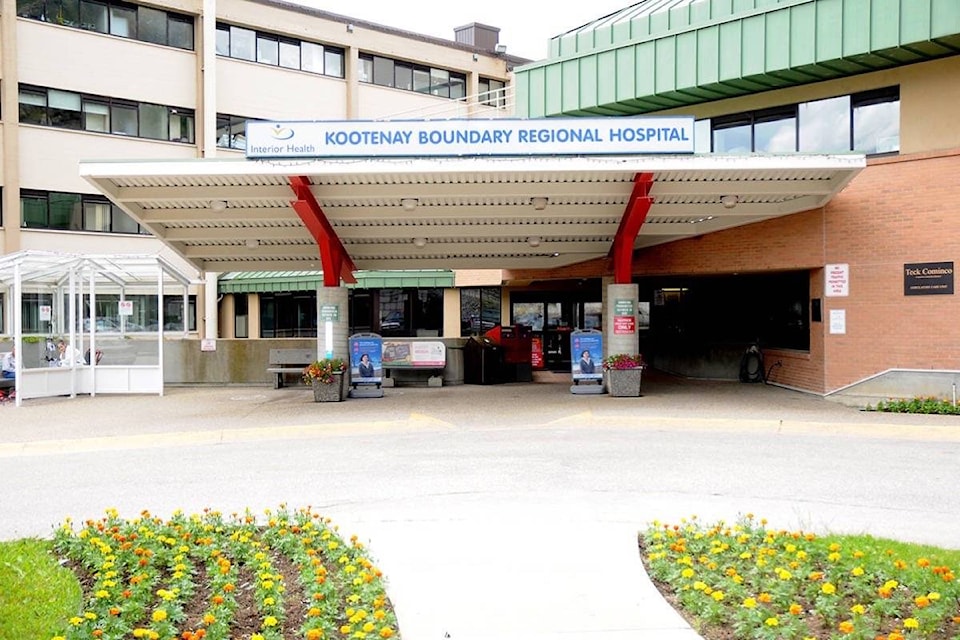Regional taxpayers will see an increase in their hospital levy this year after the West Kootenay-Boundary hospital board passed an $8.84 million budget for two dozen projects in facilities from Nakusp to Nelson and Trail to Grand Forks.
The hospital district - which encompasses taxpayers from regional districts of Central Kootenay and Kootenay Boundary as well as 16 municipalities within - is mandated to pay 40 per cent of the 2018 budget, or $3.53 million.
That means the average homeowner in the City of Trail will pay close to $54 this year.
“In short, the city will pay $485,773 for regional hospital taxes in 2018,” clarified Chief Administrative Officer David Perehudoff. “This is a total increase in the requisition of $24,626 or 5.35 per cent. The average residential taxpayer, with an assessment of $193,543, will pay $53.48 or a $1.89 increase or 3.7 per cent.”
The big ticket job budgeted this year is $2.1 million for renovations in the Arrow Lakes Hospital emergency ward. Regional taxpayers will contribute $840,000 toward upgrades which will include a dedicated triage area, new trauma bays, and updated patient exam bays.
Another $2 million will go toward region-wide IMIT (Information Management Information Technology), which refers to the design and installation of communications infrastructure.
“In broader terms, the Information Management and Information Technology investments are about upgrading/replacing current hardware and software systems used by Interior Health to support patient care and regular operations,” explained Karl Hardt, from Interior Health (IH) communications. “As well as purchase some new technologies.”
For instance, software will be upgraded to allow the exchange of clinical documents between physician electronic medical records and IH systems, thereby providing better continuity of care.
“Another example would be the expansion of MyHealthPortal, which allows patients to access their own information online,” added Hardt.
By far the broadest scope of work is at Kootenay Boundary Regional Hospital when Phase 1 upgrades break ground later this summer. Notably, the first leg of work is budgeted at $6.1 million but that funding will come from reserves and not from 2018 hospital tax levies. However, a near four per cent tax bump will allow $1.1 million to be put back into reserves this year.
An additional $600,000 from the 2018 budget will be directed into KBRH facility-wide infrastructure work that includes the installation of two new boilers and associated storage tank, washroom renovations with wheelchair access, and a new air fan on the surgical floor. The funding also includes a new waste/cardboard compactor and dishwasher/conveyor system for $186,000 and $118,000 respectively.
Kiro Wellness Centre is another Trail facility on this year’s list, having been approved for $21,000 in wireless infrastructure expansion.
Another chunk of the budget, $400,000, will be directed in “Vocera expansion and integration” at Nelson and Trail hospitals, as well as Nelson Jubilee Manor, the Slocan Community Health Centre and Talarico Place in Castlegar.
But what does “Vocera” refer to and where does it fit into improved health care?
“Vocera is a wearable hands-free speaker phone system, which can be used for communication between staff members at the push of a button,” Hardt explained. “The system will be used for staff-to-staff communication, emergency communication to increase staff efficiency, and to support Workplace Health and Safety requirements, which will assist in improving patient care.”
The mandate of the WKBRHD (West Kootenay-Boundary Regional Hospital District) is to fund capital projects and equipment. Projects and priorities are proposed each year by IHA, with a list developed in consultation between the IHA and the board. The hospital district typically pays 40 per cent of the cost of approved projects while the remaining 60 per cent is funded by the Province of B.C. or through donations provided by local hospital foundations.
